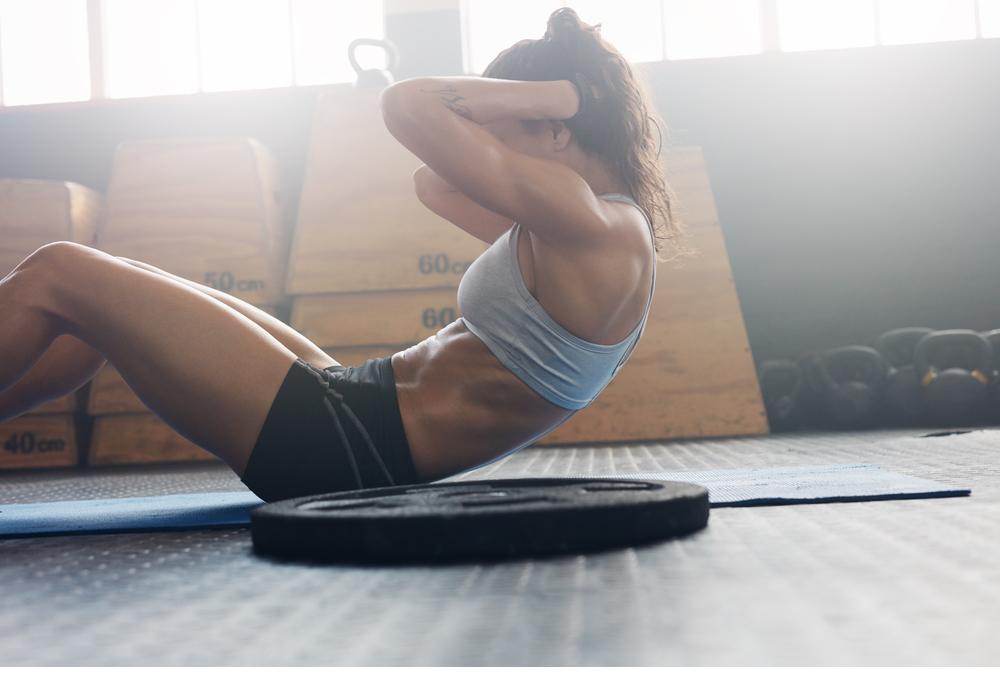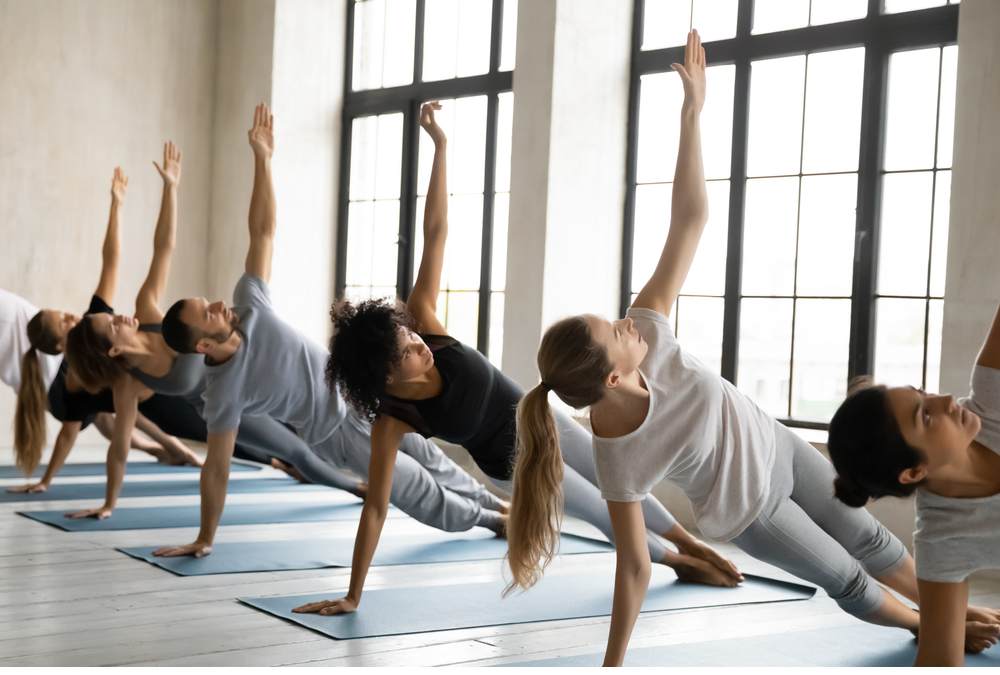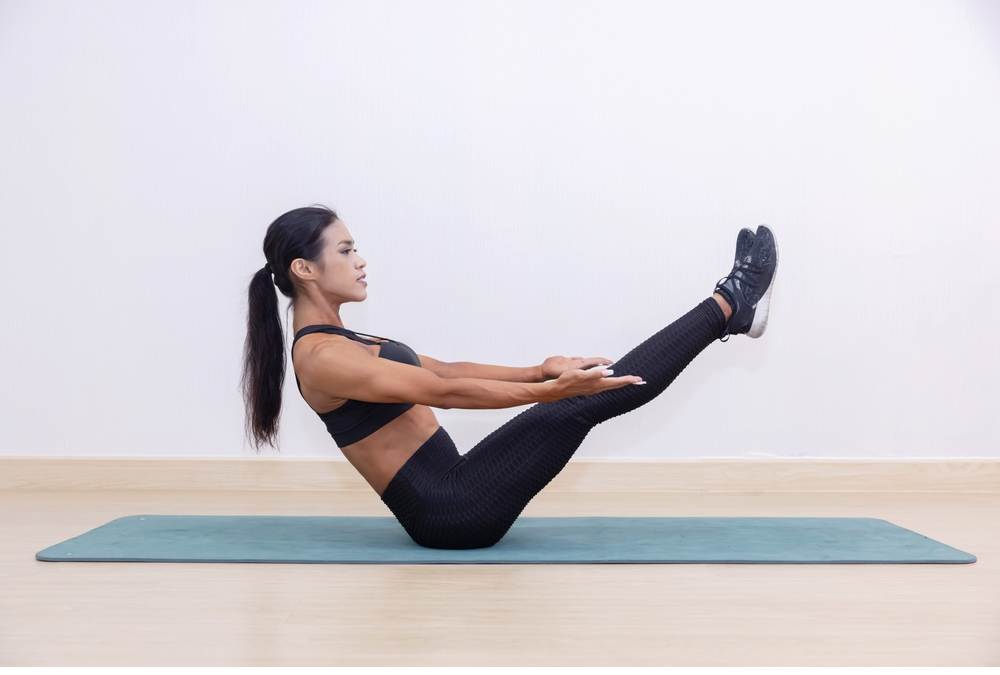 You’ve seen the workouts designed to target your core with fitness instructors who have abs of steel. But what actually is your core? And what does your core even do? From healthy posture to injury prevention, core strength is an essential aspect of your overall health and well-being. It takes more than just ab workouts to build a strong core. While crunches might be on your workout list for improving your core, so are stretches and exercises that involve your back and hips. Athletes aren’t the only ones who can benefit from a strong core. Core strength offers a variety of health benefits and has a lot more to do with just gaining an impressive six-pack. Here’s what you need to know about the importance of core strength, especially when it comes to preventing injuries.
You’ve seen the workouts designed to target your core with fitness instructors who have abs of steel. But what actually is your core? And what does your core even do? From healthy posture to injury prevention, core strength is an essential aspect of your overall health and well-being. It takes more than just ab workouts to build a strong core. While crunches might be on your workout list for improving your core, so are stretches and exercises that involve your back and hips. Athletes aren’t the only ones who can benefit from a strong core. Core strength offers a variety of health benefits and has a lot more to do with just gaining an impressive six-pack. Here’s what you need to know about the importance of core strength, especially when it comes to preventing injuries.
What Makes Up Your Core
Many people associate core strength with abdominal muscles. Your core is actually made up of muscle groups in the trunk of your body, including your abdominals, obliques, glutes, diaphragm, back, spine, and pelvic floor. All these muscle groups and structures work together to create your core strength. Abdominal muscles, or abs, help stabilize your upper body, assist with breathing, and protect your internal organs. You also rely on your abs for balance and postural support. Obliques refer to a combination of muscles along the sides of the body that protect your spine and help stabilize your lower back and hips. You engage the oblique muscles when you bend forward, tilt sideways, or rotate your torso. Glutes refer to a group of muscles in your buttocks that help propel you forward while walking and running. You also use your glutes for common movements like bending and squatting. Your diaphragm is a muscle that helps you breathe and contracts when you inhale and exhale. Muscles in your back provide support for your spine and help with posture and stability. The pelvic floor includes internal organs like the bladder and intestines, along with connective tissues between your torso and pelvis, like your hamstrings and hip flexors.
Why Core Strength Is Important
 The muscles and structures of your torso make up your core. Here are five reasons why core strength is so important to your health and well-being.
The muscles and structures of your torso make up your core. Here are five reasons why core strength is so important to your health and well-being.
Provides Stability
A strong core provides stability to your whole body. Whether you are sitting or standing, you depend on your core to help you maintain balance and keep your upper body from leaning too far forward or backward. People who spend a lot of time in a seated position can experience a weak core, which makes it easier to hunch forward or slouch into your seat. Standing for long periods of time with poor core strength can also make it more difficult to balance properly, and you may find yourself leaning against something to help offer stability. As you move your arms and legs around, your core helps you stay upright while you go about your day.
Supports Mobility
In addition to enhancing your performance during sports and activities, a strong core will also help make everyday movements easier. A strong core will support your mobility and allow for better breath control and proper form while bending, lifting, and turning. From swinging a golf club to going for a light jog around your neighborhood, having a strong core will engage all these muscles while you move and utilize their strength to help you move more easily. After an injury, you may lose some range of motion and need to strengthen your core to regain your strength and mobility.
Enhances Flexibility
Strong core muscles will also enhance your flexibility. Your abs, obliques, and glutes all allow for greater movements like bending, twisting, and lifting. When these muscles are strong, they are better able to support a wide range of movement and flexibility. As adults move into middle age, they start to lose some flexibility. Stretches and exercises that target your core can actually help you retain and improve your flexibility for years to come.
Improves Posture
You might be surprised to learn just how big of a role your core plays in having proper posture. When you sit up straight or stand with proper posture, you rely on muscles that support your spine to help you maintain that healthy posture. Weak core muscles can make it difficult to hold proper posture because they have become stretched, weakened, or tight with disuse. Learn how to activate your core muscles to help improve your posture while standing and sitting so you can reap the health benefits of engaging in proper posture throughout your day.
Promotes Better Form
When exercising or playing your favorite sport, using proper form is key to help protect you from injury. Just like how a strong core can help improve your posture, it can also help you improve your form during activities. When you engage your core muscles while working out or playing sports, they become stronger and more mobile. A strong core will allow you to maintain proper posture and better form while exercising and during other activities.
Signs of a Weak Core
Do you experience lower back pain? Do you have poor balance? Does your posture need work? All these could be signs that you have a weak core. If you haven’t suffered a recent injury, you might be wondering why you have uncomfortably lower back pain or trouble going from sitting to standing without bracing your hands on something to help you up. A weakened core can make it difficult to hold a healthy posture and maintain your balance. People who experience chronic low back pain might deal with poor posture because their core is not strong enough to support them for long periods of time. Weak muscles in your back can cause you to sit or stand with your hips tilted down in a position known as swayback. This can cause your core muscles along your stomach and pelvis to overstretch while the muscles in your lower back shrink and become weak.
Physical Therapy and Injury Prevention
 So, you might be wondering, “how do I improve my core and help prevent injuries?” Engaging in a well-rounded exercise program will target the various muscles in your core to make them stronger, more stable, and more flexible. You can work with a physical therapist to experience a personalized action plan to help you improve your core strength and experience all the lasting health benefits as a result. Core stretches will help train your muscles to better support your spine, hips, pelvis, and abdomen. When you have a strong core, your balance and stability will improve, which can potentially help prevent falls. Everyday activities like standing, twisting, and lifting will become easier. Physical therapy exercises that target your core will also help prevent overuse injuries from continuing to bother you. Physical therapists are movement experts who will walk you through safe and effective techniques that improve your strength and mobility. Plus, a physical therapist will supervise your exercises to make sure you are using proper form and only performing stretches and exercises that work for your body and health needs. A physical therapist can also keep you motivated as you make your way through an exercise regimen to improve your core strength.
So, you might be wondering, “how do I improve my core and help prevent injuries?” Engaging in a well-rounded exercise program will target the various muscles in your core to make them stronger, more stable, and more flexible. You can work with a physical therapist to experience a personalized action plan to help you improve your core strength and experience all the lasting health benefits as a result. Core stretches will help train your muscles to better support your spine, hips, pelvis, and abdomen. When you have a strong core, your balance and stability will improve, which can potentially help prevent falls. Everyday activities like standing, twisting, and lifting will become easier. Physical therapy exercises that target your core will also help prevent overuse injuries from continuing to bother you. Physical therapists are movement experts who will walk you through safe and effective techniques that improve your strength and mobility. Plus, a physical therapist will supervise your exercises to make sure you are using proper form and only performing stretches and exercises that work for your body and health needs. A physical therapist can also keep you motivated as you make your way through an exercise regimen to improve your core strength.
Exercises to Improve Core Strength
Check out these three exercises your physical therapist may recommend to improve your core strength and help prevent injuries.
Plank
One of the best exercises for improving core strength is a plank. This move engages your entire core along with muscles in your shoulders, arms, and legs. Lie on the floor face-down and rest your forearms on the floor on either side of your head. Your elbows should be in line with your shoulders as you press your arms into a 90-degree angle. As you press your upper body into position, you will also rise on your toes and hold your torso above the ground. Hold this position with a straight back and practice balancing on your elbows and the balls of your feet.
Leg Marches
Lie on your back with your knees bent and arms relaxed by your side. Engage your abdominal muscles while you lift one foot 12 inches off the ground like you are taking a step or “marching.” Then lower that foot to the ground and alternate with the other foot. You can alternate between your right and left leg and focus on maintaining balance with each movement.
V Sits
A V sit-up is a variation of a crunch where you engage your core by working multiple areas at the same time. Start seated on the floor and lean your upper body backward as you lift your legs into the air. You will balance with your body in a V shape and balance on your buttocks. Hold this V-shape position with your abs and core engaged before slowly returning to your starting position.
Visit AICA Orthopedics in College Park to learn more about how our team of doctors can help you improve your core strength and help prevent further injuries!